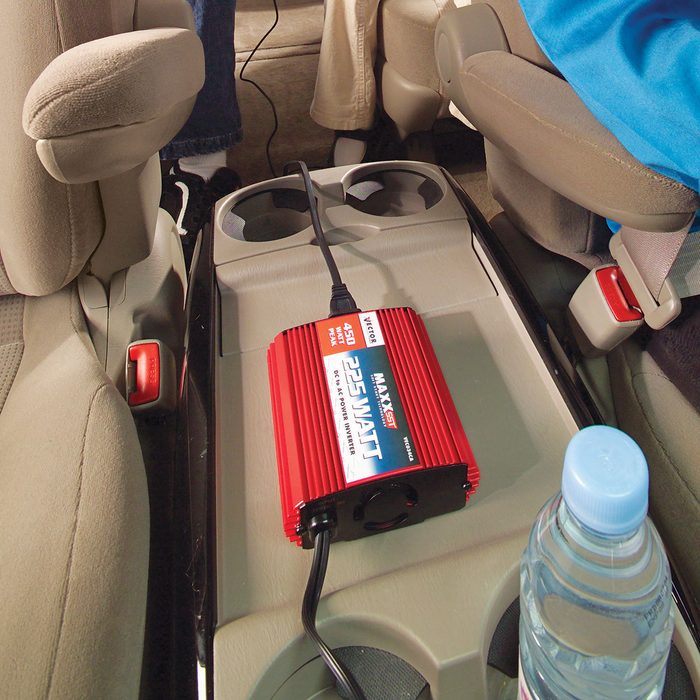Can You Use a Car Power Inverter for a Laptop or TV?
Updated: Sep. 28, 2023

Power inverters allow you to run low power AC electrical devices like computers, video cams and even TVs in your car. We tell you your options and how they work.
An automobile power inverter is an electrical transformer that takes the 12-volt direct current (DC) and changes it to 120-volt alternating current (AC). That allows you to run small electrical devices that you normally plug into a wall receptacle.
Your auto electrical system is a 12-volt DC system that runs off the battery and the alternator when the engine is running. The inverter allows you to tap into the system and draw a limited amount of power to run 120- volt AC devices.
Some inverters have additional features such as a lighter plug so you can use a DC device along with the AC receptacle. This unit has a built-in plug adapter you can use in an airplane’s receptacle.
On This Page
Will All Small AC Devices Work on the Inverter?
That depends on the type of inverter you buy. There are two types of power inverters: “modified sine wave” and “pure sine wave.” Modified sine wave inverters, which are less expensive and more common, work for about 90 percent of small devices.
This type won’t charge some rechargeable battery-operated tools, and it can cause interference patterns on some computer screens and printers. We tried several laptop computers on the modified sine wave inverters and they worked just fine. But because computers are expensive, check with the manufacturer before plugging it in.
The more expensive pure sine wave inverters have the same quality AC electricity that’s supplied to a home receptacle. They’ll power all small appliances provided they’re within the wattage capability of your cigarette lighter socket and inverter.
Inverters for laptops
Most laptop computers work fine with inexpensive inverters, but check with the computer manufacturer to be sure.
High-quality electricity inverter
Expensive “pure sine wave” inverters supply clean, utility-like electricity to power any small device.
What Size AC Device Can I Run?
The power output of the inverter is limited to the fuse size of the car’s power outlet, or lighter socket in our case. For example, a 10 amp–fused 12-volt lighter socket will safely power about 1 amp of 120-volt AC (or about 120 watts). (See formula below.) A 15-amp socket will power 1.5 amps of 120-volt AC (about 150 to 180 watts), and a 20-amp will power about 2 amps (about 200 to 225 watts).
Check your vehicle owner’s manual to see the fuse size of your lighter socket. Most cars are about 15 amps, but many larger SUVs and trucks have 20-amp sockets. Generally, a small drill or 13-in. TV would be the maximum you could expect to run from the socket with a 200-watt inverter plugged into a lighter socket.
Formula: Amps x Volts = Watts
Check a device’s amps on the spec plate and multiply by 120 to get the wattage. For example, a 2-amp device will consume 240 watts.
Note: Actual wattage will vary because of inefficiencies in the inverter and devices
Are There Other Concerns About Inverters?
Yes, inverters produce heat and need ventilation. Many inverters have built-in fans, which in turn consume electricity to keep themselves cool. Generally speaking, inverters don’t work well in temperatures above 90 degrees F. Inverters can also drain your battery quickly unless your engine is running and charging your battery.
Most inverters have an audible alarm when they sense a lowered power source, but it may be to your advantage to buy a bit more expensive unit that shuts itself off when it senses a low battery. Don’t run small devices plugged into your inverter for more than an hour without starting your car and charging the battery.
You can hook a larger power output inverter directly to your vehicle’s battery. However, the battery and charging system need to be able to keep up with the heavy power draw. Consult an automotive electrical specialist if you plan to use large inverters.